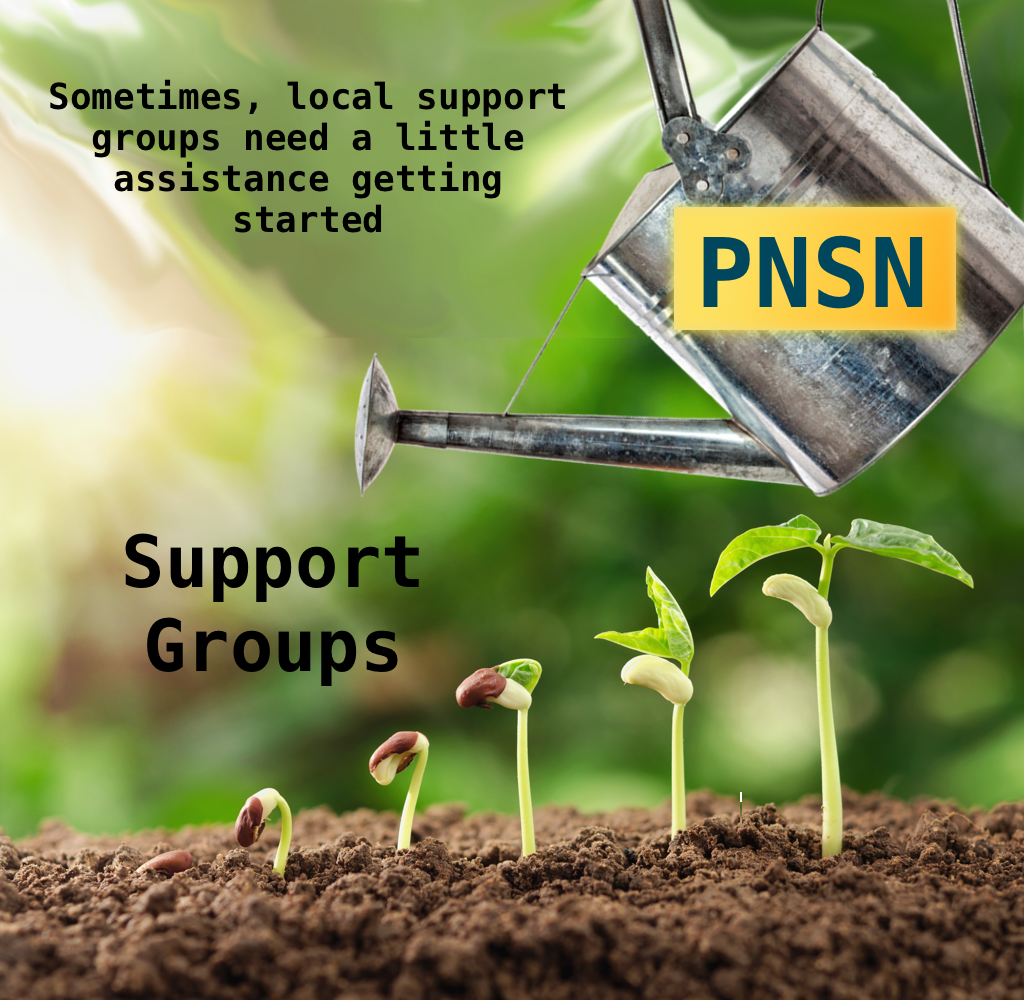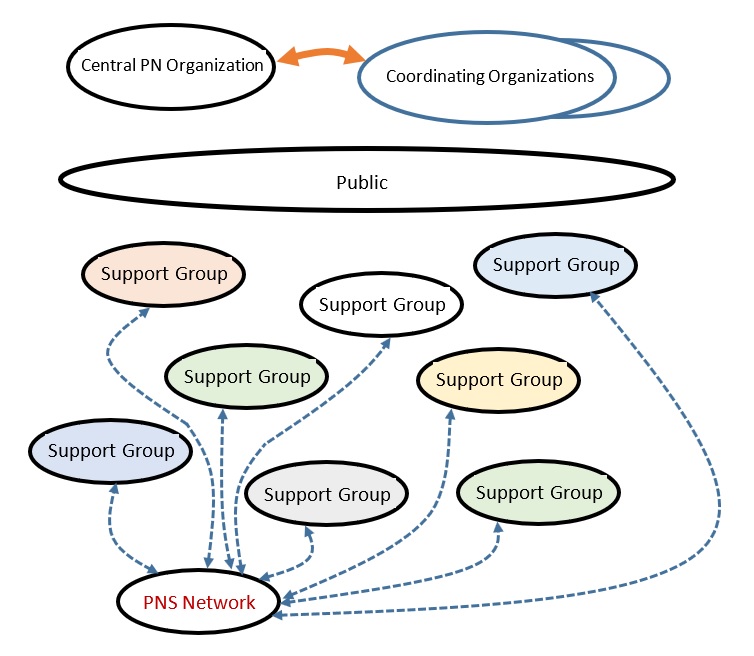A Support Group’s Support Group

Our Name: The Peripheral Neuropathy Support Network.
The Problem: Estimates show that up to 10 percent of the population suffers from Neuropathy. There are too few support groups. That both denies help to most and slows advocacy to a crawl.
This video explains why.
Our Mission: To help PN patients and their caregivers, by providing tools, support and content, to a network of local support groups.
Our Vision: Using technology tools and platforms, provide the support, education, and content volunteers need to start and sustain a growing number of community groups for PN patients and their caregivers.
Our Approach: Create an organization to develop and provide that support. We intend to provide tools, materials, policy, guidance, and emotional support. But we will not simply be another PN support group. Our “customers”, those we support, will be the people running PN support groups. Internet technologies like zoom and webinars evaporate geographical boundaries, facilitate efficient sharing and provide educational and social options for mobility-impaired members.
Some examples of what we intend to do are listed below. A more complete list is on the Our Approach page [insert link when the page is available]
— Create a formal non-profit organization (with 501(c)(3), board, etc.) which will enlarge our ability to attract volunteers, donors and the assistance of other organizations interested in helping non-profits.
— While we support a small network already, our small group of volunteers will probably initially focus on adding groups in senior living facilities. See our Current Network page [insert link to a page describing support groups we are currently working with]
— Use funds, volunteers, procedures and editing tools to collect, edit and curate material that reflects PN’s special characteristics.
— Help both traditional face-to-face groups and web-based meeting forums (such as Zoom or Facebook Live).
— Extend the reach of experts by distributing edited recordings of their presentations or interviews
— Provide access to curated, modified or newly developed material that reflects PN special characteristics. Including a group starter kit, lessons learned, policies, websites, studies, videos, presentations, FAQs, blogs, etc.
— Facilitate access to licensed materials that would otherwise be prohibitively expensive.
— Teach/coach volunteers
— Maintain a speaker’s bureau and central lists of helpful contacts and vendors (such as our current Resources page).
— Provide technical guidance on use of technologies such as Zoom, email systems, social media, and websites
— When needed, help new groups get financing for startup costs or significant new initiatives and advocacy efforts
Our Future: We hope to be a part of some future central organization that takes a comprehensive approach to elimination of this disease.
Our Challenge: Our current staff are volunteers who themselves have progressive forms of PN. We believe this challenge can be overcome.
Why are we needed? There are not enough support groups to perform the advocacy that a comprehensive approach requires. PN is not a classic disease where support groups emerge naturally. The essay Overcoming PN’s Unique Support Group Barrier explains this aspect of PN.
We have referred to our effort as a “network” because, if we are successful, the result might look like a classic network. Our organization would be supporting many other groups – a “network” of support groups. Above them, the groups support those affected by PN – both by directly helping the public (patients, caregivers, family and friends) and by organizing the grass roots power to execute vigorous advocacy campaigns. By their money, voices and participation, the public supports a central organization (such as an expanded FPN) to orchestrate communication, advocacy and research priorities. In turn, the central organization is a strong voice in coordinating the actions of the various organizations that have a hand in finding cures and treatment for PN. For example, foundations, universities, research organizations, professional societies, governments, insurance organizations and employer groups.

